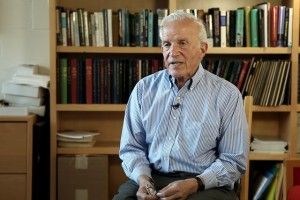Discovery of Molecular Clouds in our Tiny Neighbor...
The dense cores of star-forming clouds have been observed for the first time in a tiny dwarf galaxy.

Time is something that we experience on a daily basis, characterized by notions such as the past, present, and future. Its progression is embodied in our continued experience of the future becoming the present while the present becomes the past. In fact, it would be impossible to talk of motion or dynamics without the concept of time and its progression. In this sense, it is very similar to our experience of space. Just as it is natural to ask where a certain event has taken place, it is also natural to ask when it occurred. Therefore, time, along with spatial coordinates, is a marker for defining events. However, it is clear that time is different to space in how we experience it in our daily lives. Whereas we feel free to roam in any spatial coordinate that we desire, we feel compelled to follow time forward and always at the same pace. However hard we try, the clock will always tick-tock as it always has and will. The future will displace the present, which will, in turn, be driven to the past. This everyday experience of time as possessing a clear (always forward) direction is strangely not borne out in fundamental descriptions of nature, and this continues to be one of the biggest puzzles in fundamental theoretical physics.
Time in Classical and Quantum Mechanics
In classical physics, time is absolute and invariable. All clocks tick at the same rate, and everyone’s experience of time is the same. In this sense, the concept of time here is very similar to our everyday experience of it. However, what is important is that classical physics does not choose an arrow of time. Time-reversing a process or event is just as valid in classical physics as the original process. It makes as much sense to walk forward up a street as it does to walk backward down the street as far as the laws of classical physics are concerned.
Time and the Theory of Relativity
The theory that completely changes our paradigm of what time is Einstein’s theory of relativity. Relativity asserts that the progression of time is not universal and depends intimately on who is measuring it. In this picture of reality, watches tick at different rates, depending on who is wearing them. By accelerating at extraordinary rates or being present in the vicinity of strong gravitational forces, such as those around a black hole, one can change the rate at which time flows, even bringing it to a stop or reversing it, at least theoretically. For example, for a person inside a black hole, space and time seem to interchange. Here, it is the descent into the black hole singularity that becomes inevitable, just as the forward flow of time was outside the black hole. On the other hand, “time” becomes just another direction, like left or right.
Relativity puts time on an equal footing with the spatial directions that we are used to; the consequence is that just as spatial directions are not universal and can, for example, be curved, so too can the time direction be “curved.” A measure of this curvature is the rate at which it proceeds. Nevertheless, in relativity, too, the equations are time-symmetric; that is, they do not favor a particular arrow of time.

Arrow of Time
The one feature that classical, quantum, and relativistic mechanics share with respect to time is that neither theory designates an arrow of time. Of course, solutions to their equations can break time symmetry, but the theories themselves are time-symmetric. So where does the time asymmetry that we experience around us come from?
Most of the time, the asymmetry that we experience results from thermodynamics. In particular, the second law of thermodynamics states that the entropy (roughly the amount of disorder) of a system increases with time. A consequence of this law is that, for example, you will never expect to see a puddle of water unmelting in the sun to form a block of ice and hence heat up its surrounding. It must be stressed that this law is a statistical statement rather than a rigorous mathematical result derived from the equations of fundamental physics. Why such a statistical law ought to be true and how it is related to the fundamental theories of nature is the “arrow of time problem.”
Edited by Ksenia Vinogradova

The dense cores of star-forming clouds have been observed for the first time in a tiny dwarf galaxy.

MIT Prof. Daniel Kleppner on atom cavity oscillations, quantum entanglement and mechanical systems that are de...

Physicist Jonathan Butterworth on the term ‘fundamental’, the forces of the Standard model and why gravity is ...